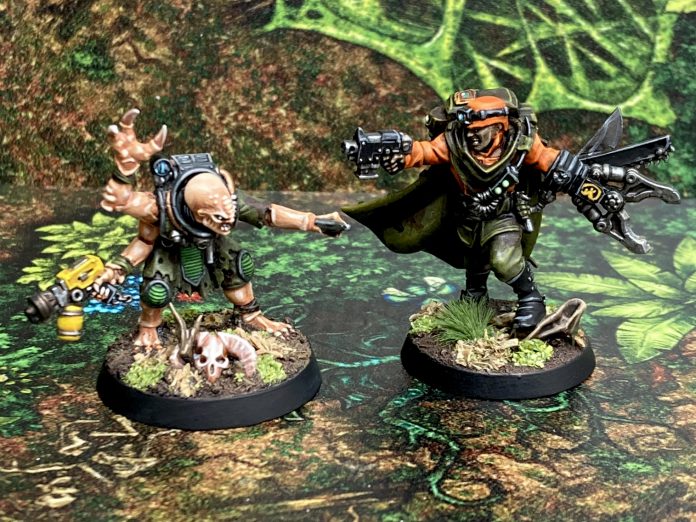This article gives everything you need to play your own Twisted Jungle games on dense, forested boards using print-ready files and instructions to make your own terrain tiles. Whether you prefer Catachan-themed Kill Team missions, Realm of Ghyran Warcry skirmishes, Jungle Dome scenarios for Necromunda, Star Wars: Legion and Shatterpoint games on Kashyyyk, or a lush setting for an RPG session, this article gives you the tools to introduce a novel and exciting “fog of war” element to your favorite games.

[NOTE: This article was updated on 11/7/23 with links to improved v1.3 files, featuring lusher print-ready Sector art and additional rules, including a full skirmish mode for Warhammer 40,000 based on classic Kill Team.]
Dear Goonhammer Reader,
If you’re at all aware of me, BuffaloChicken, you will most likely know that I have a terrible affliction. I am terminally and irreparably fixated on jungle themes, to the point where other hobby thoughts are barred from entering my mossy brain. From the article about making Deathworld Forest terrain, to the “How to Base Everything: Jungle Bases” article, to my Instagram account overflowing with tropical-themed models, I am chronically and incurably one-dimensional about this matter. The bit has been committed to, and it’s too late to ever change.
This led to some issues when I wanted to design Zone Mortalis and Boarding Action terrain that fit with the theme. Eventually I settled on making the “(Indiana) Jone Mortalis,” a Zone Mortalis-style board designed as an ancient temple complete with creeping vines and rolling boulders.

While I was happy with this solution, some elements of the brainstorm which preceded it refused to go away. I wanted more, and so the Twisted Jungle idea was born.

What is Twisted Jungle Terrain?
Below is the list of design parameters I set myself for this project:
- A “fog of war” element, meaning that neither player knows what lies between them until a model or unit explores the unknown.
- Gameplay mechanics that reflect moving through dense underbrush, including the limited ability to shoot and move through thick foliage walls if necessary (unlike the solid walls of a traditional Zone Mortalis board).
- Clear direction on how/when/where exciting elements could be located and introduced – hidden treasure, secret passages, carnivorous plants, “AI” enemies that attack both players, etc.
- Flexible enough to work for multiple systems, from squad-based Boarding Actions to small Necromunda gang squabbles to roleplaying games.
- Visually generic enough to fit into any setting – the Grim Darkness of the Far Future, the Mortal Realms, a Galaxy Far Far Away, etc.
- Perhaps most importantly, it has to look good!
Essentially, the goal was to combine the aesthetics and “reveal as you go” mechanics of the Games Workshop Lost Patrol mini-game with the practical playability of the Necromunda Zone Mortalis cardboard tiles. If we smashed the theme on the left with the practical implementation on the right, what would we get?

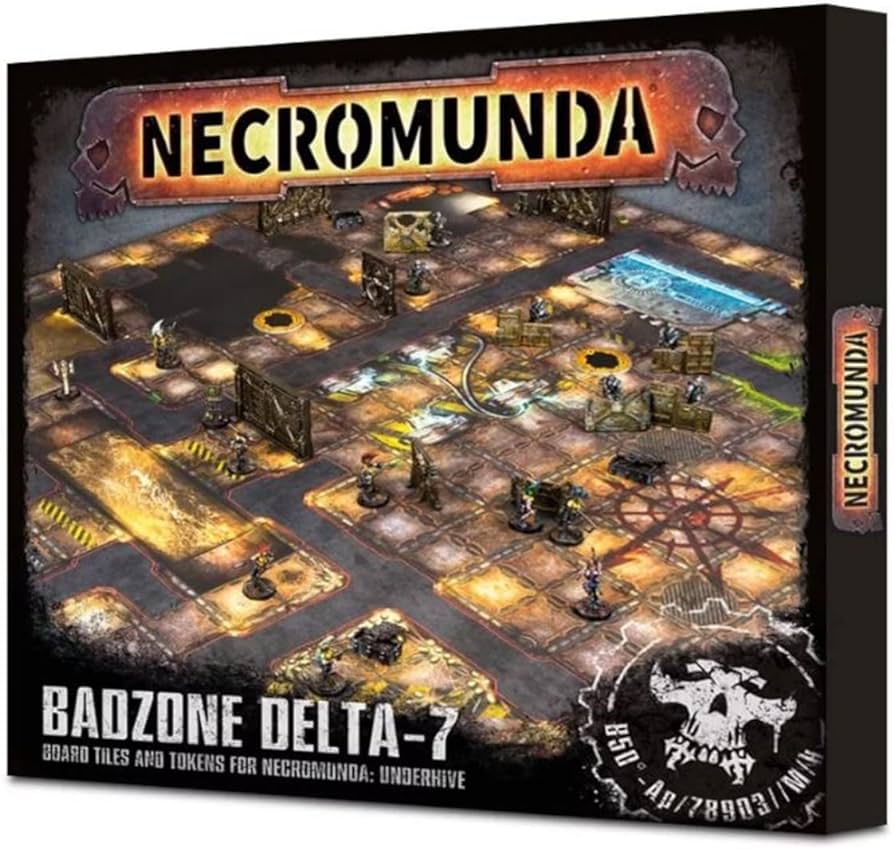
I’m very happy with the result, which I believe has succeeded on all fronts!

How Does the Final Product Look?
Here are some photos of the first draft of a printed Twisted Jungle tile set, both stacked facedown with the “forest marble” backside showing and with all 16 tiles arrayed:
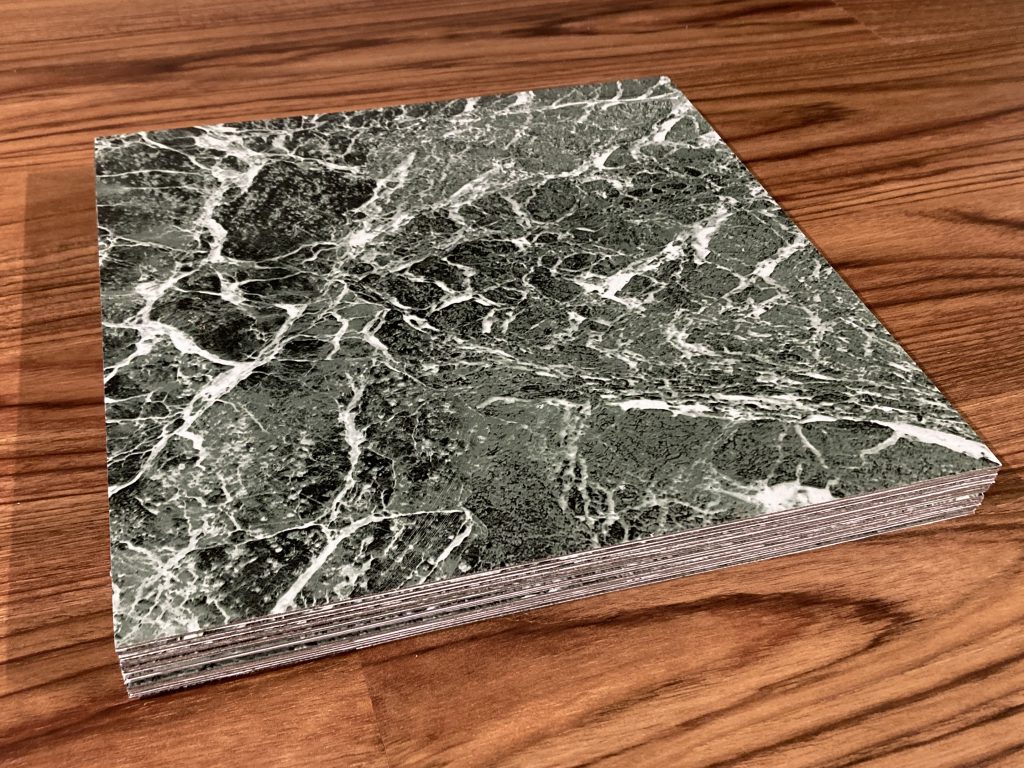

Here is an example start to a Twisted Jungle game, with just deployment zones revealed:
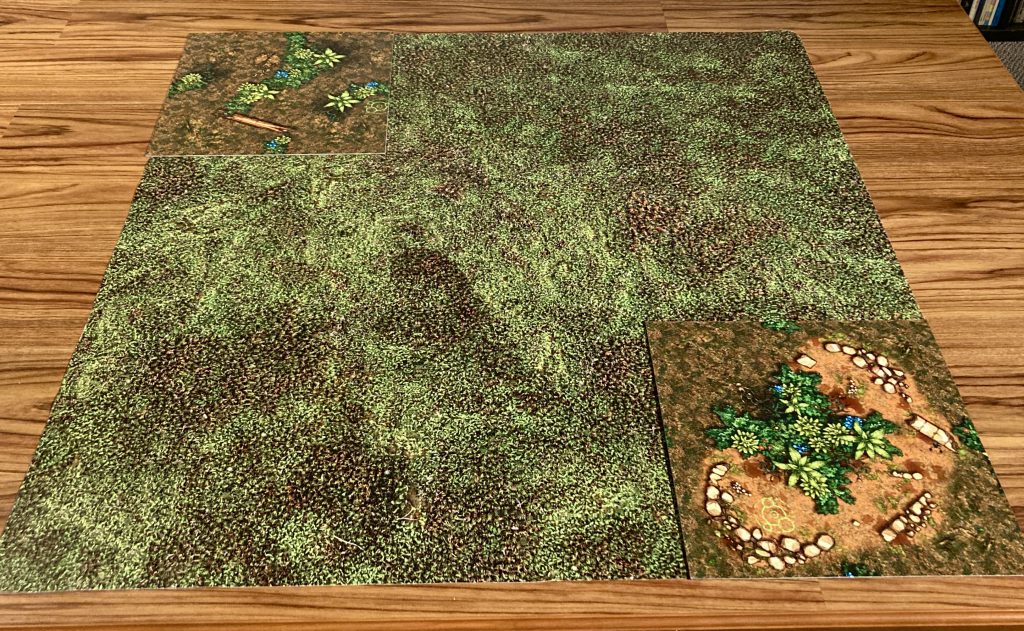
A mid-game shot, with the map joined in the middle:

And a final photo with the full map explored, both sides no doubt bushwhacking into the far corners of the table for objectives:
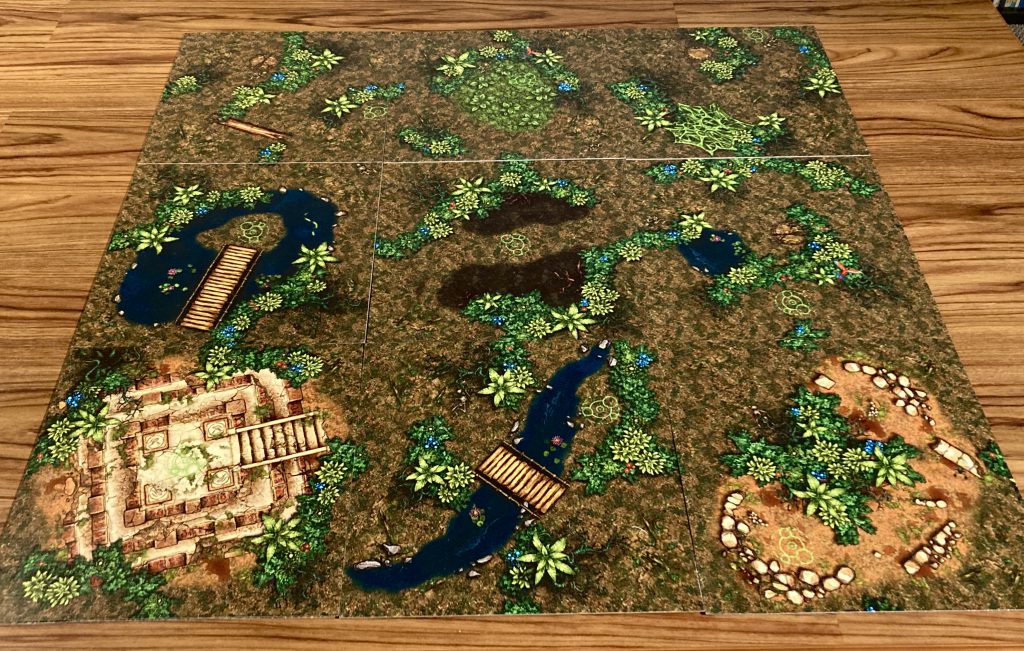
With a few scatter terrain elements, like cheap toy trees and terrarium plants on bases, you can further elevate the appearance.
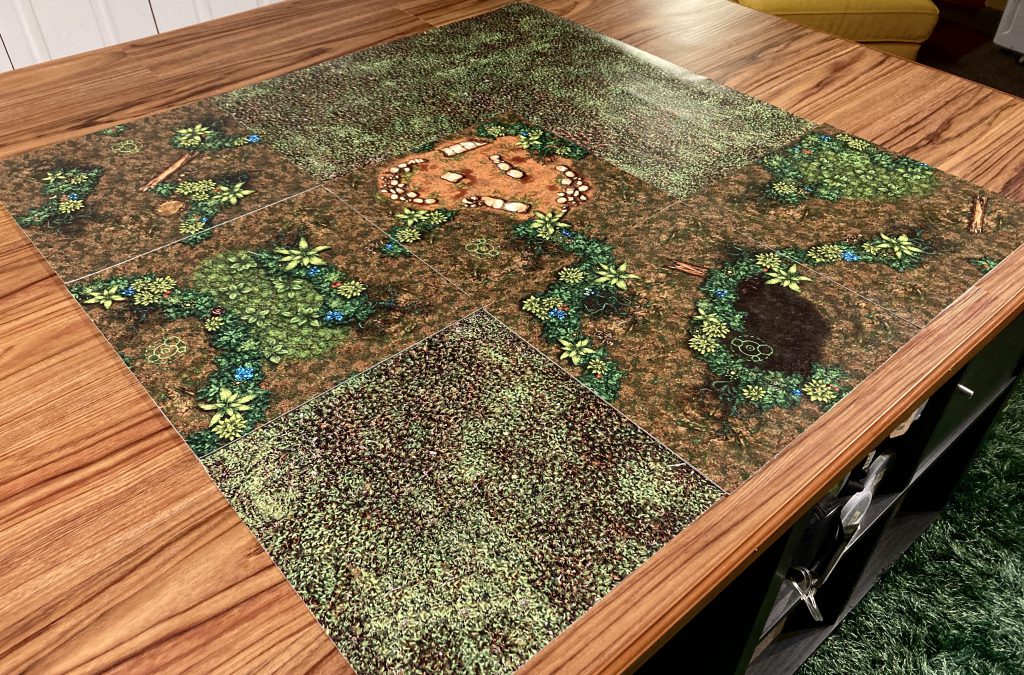
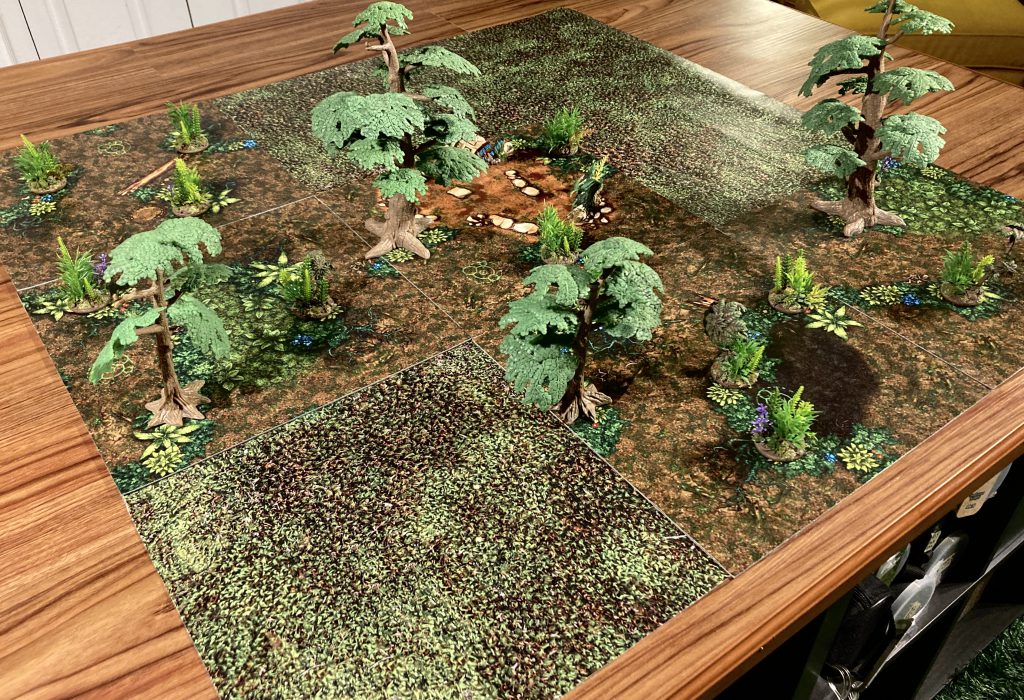
If you wanted to make 3D “hedge walls,” it couldn’t be easier – just mound some tinfoil or cheap clay into the shapes you want, prime them brown, douse in glue, and roll around in a mix of clump foliage and craft lichen.

Rules and Scenarios
Now that you’ve seen the tiles, how do they get used in real games?
Download the Twisted Jungle Games v1.3 PDF to get playing!
As a quick summary, the mechanics are simple.
Define a play area, place the first tiles for deployment, and leave the rest of the table blank. As a model moves into a section of the play area without a tile, stop their movement and place a new tile. If the scenario has a special effect (treasure, objectives, hostile xenos, etc.), that effect takes place at the Action Point printed on the tile. After that, the model which paused its movement now completes it in any direction. That’s it!
Many of the Sector tiles have pictures of terrain beyond the basic Jungle Walls. The Twisted Jungle document provides suggestions on what rules this printed terrain can offer models, should both players agree to it. Though optional, using rules for the printed terrain makes games more exciting and eliminates the need to introduce modeled terrain should none be conveniently available (or desirable – sometimes it’s appealing to play a quick, portable, no-mess, board-game-style skirmish battle using just tiles).

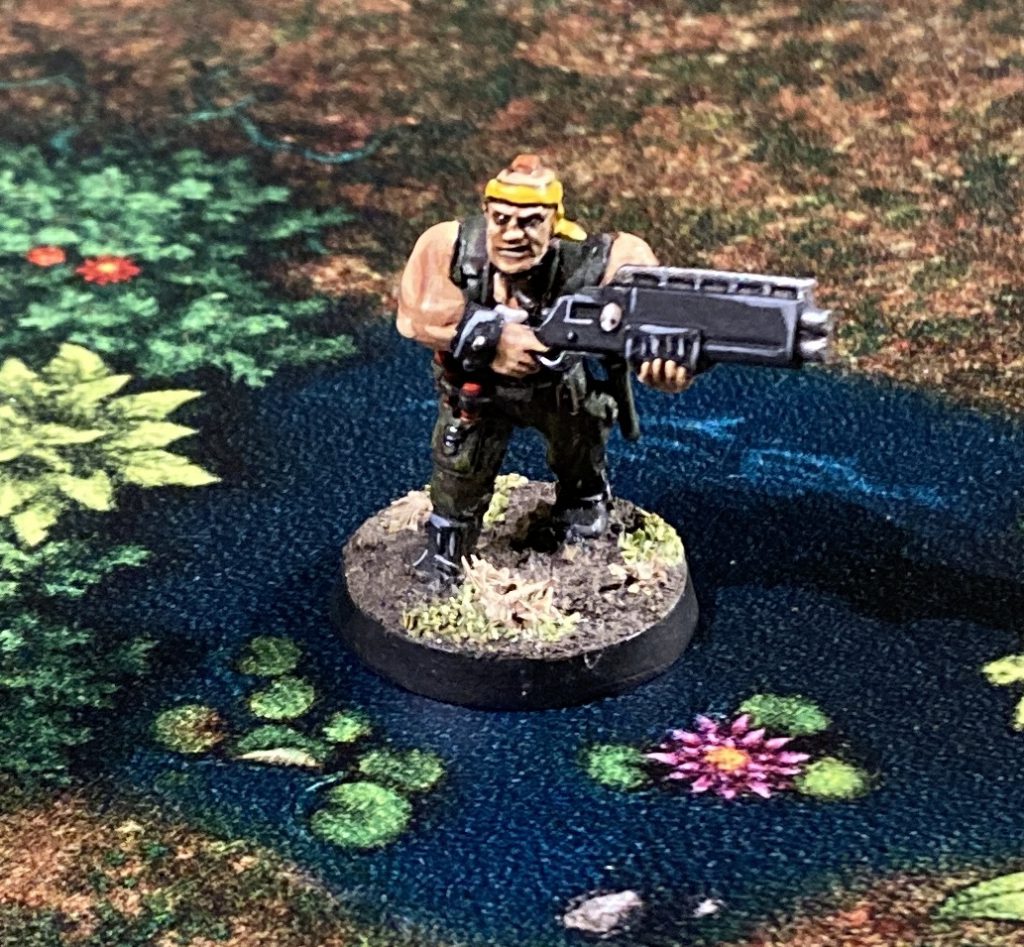
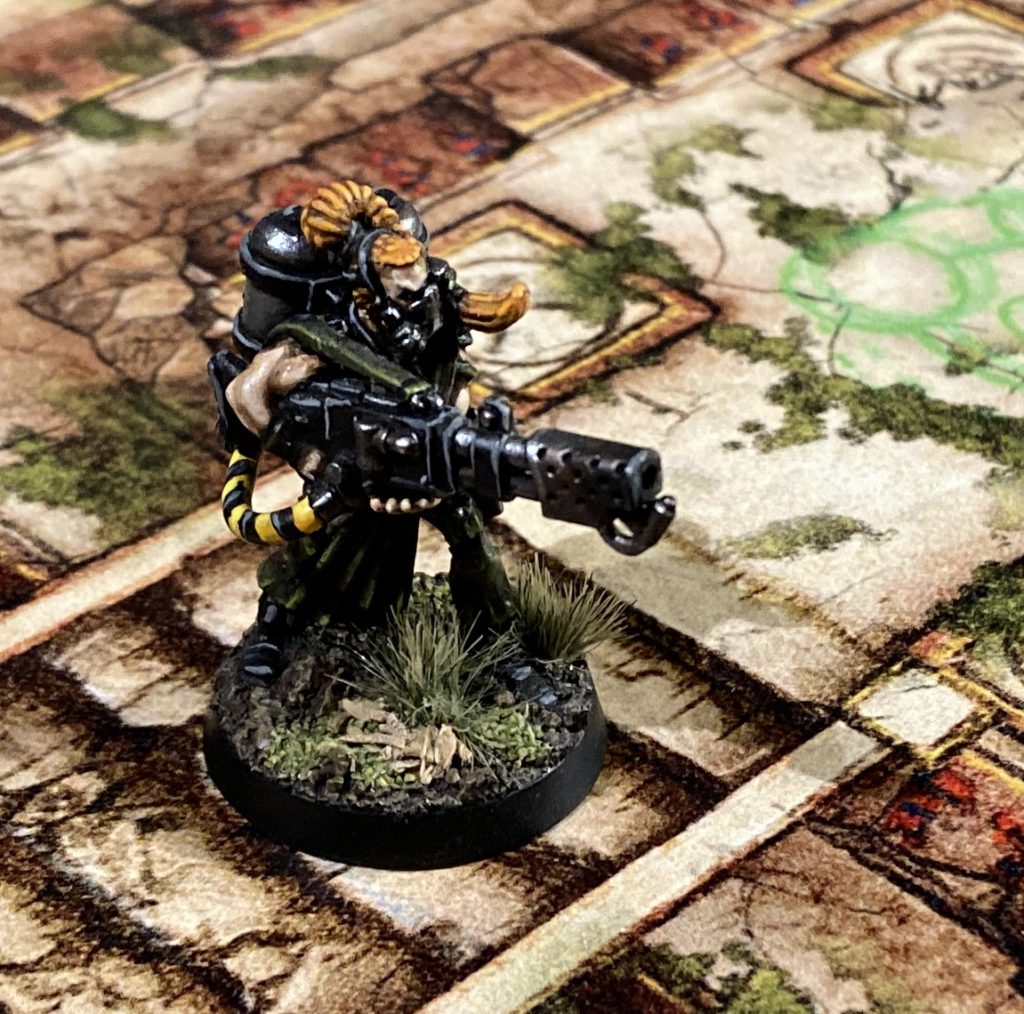
The Twisted Jungle document gives plenty of inspiration for using these basic rule mechanics in fun and creative ways. Imagine…
- Searching the jungle for the entrance to an underground temple or military base, after which models can descend to fight on a separate linked board.
- Giving players the ability to rotate unoccupied tiles after their turn, representing a shifting and confusing landscape.
- Having each tile spawn random enemies, whether Venus Mantraps or voracious little Ewoks, which always move toward and attack the nearest player model.
- Reversing the process to represent a forest fire or volcanic eruption – start with a full table of tiles, and remove them randomly each turn to force players into a shrinking battlefield.
No matter what universe or game system you’re playing with, there are plenty of creative ways to incorporate modular and random tile terrain into your games.

Making Your Own
I hope, if you’ve read this far, that you’re excited to play games in a Twisted Jungle of your own. My goal is to get you there as quickly and easily as possible!
In addition to rules and scenario inspiration, the Twisted Jungle document contains detailed instructions on how to design, print, and durably mount your own terrain tiles. Essentially it boils down to printing the tiles on a vinyl banner, sticking adhesive floor tiles on the back, and cutting them out with a sharp box-cutter. Not too difficult.
Here is the full-resolution, print-ready image of the prototype Twisted Jungle for your use.
While I’ve made every effort to make this project as cheap and accessible to everyone as possible, I understand that some people won’t have the confidence or time necessary to go the DIY route. For those people, a very few completed sets of Twisted Jungle tiles will periodically be available on Etsy. My wife has always begged for an excuse to run a shared Esty store, and this seemed like the way to do it (the shop name “Buff Chick Crafts” is both a wink toward my online moniker, and a nod to my strong wife and any knitwear she might want to sell there). If you see the store is out of stock but want to purchase a set, use the “contact” button to send a message and we can let you know when more become available.

Do Forests REALLY Look Like Mazes, Though?
First off, how dare you. If anyone calls this terrain unrealistic, please assure them that the designer is a professional trailbuilder, experienced backcountry guide, and certified wilderness Search & Rescue team member. The amount of time I spend following trails, animal paths, and just straight bushwhacking is the reason I always have forest-themed hobby projects on the mind.
Take a look at these photos from a recent trip and tell me they don’t resemble a Zone Mortalis situation to you.
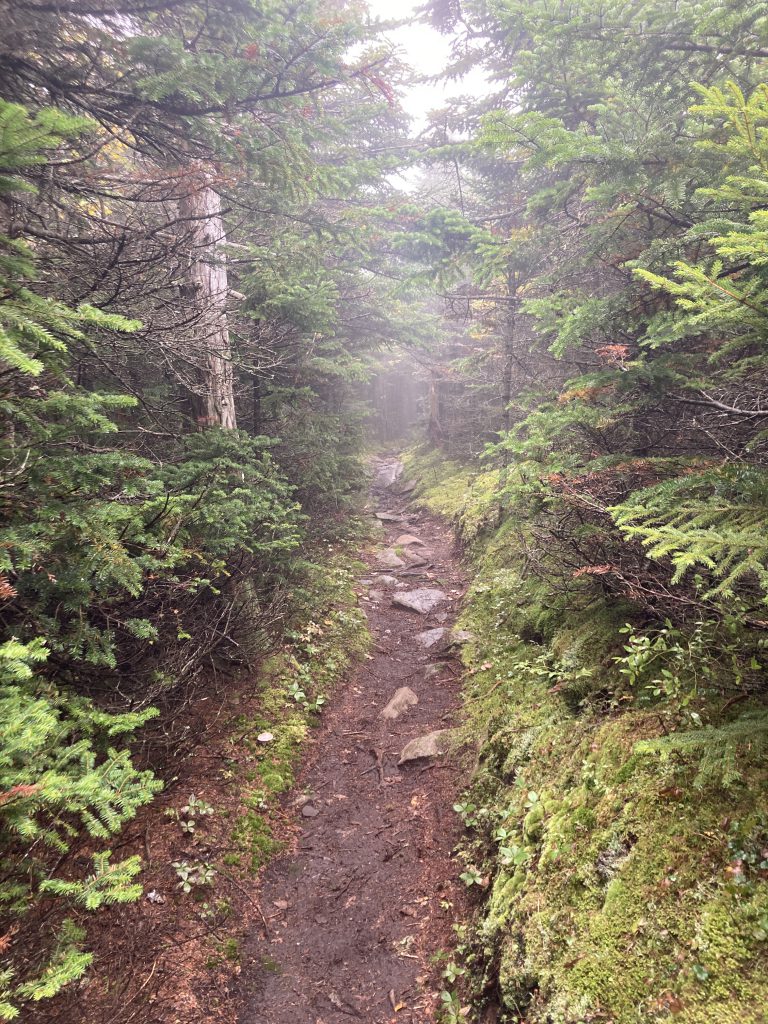
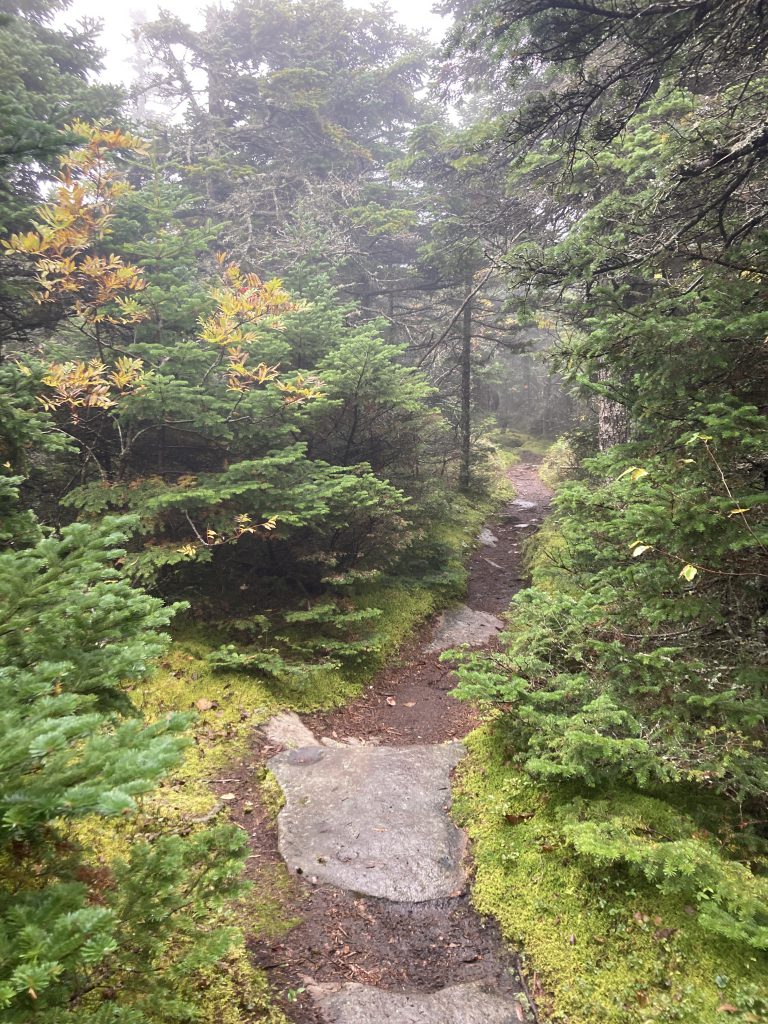
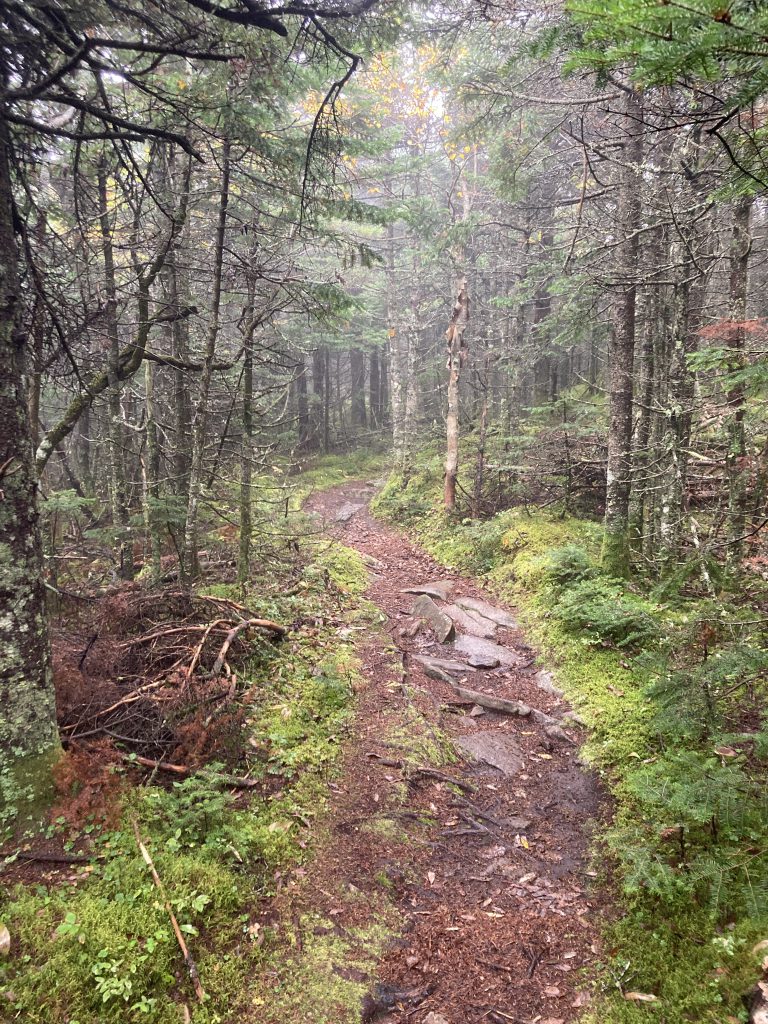
I assure you that crashing though the dense branches on either side is possible, but painfully slow – as the game rules reflect!

What’s Next?
What you see in this article is only the beginning of this project. I hope to improve the current designs, make brand-new tiles, and maybe even consider new environments if people enjoy the tile-bases system and ask for more. What would close-quarters fighting look like in the twisted confines of a Valhallan ice cave, a Tallarn canyon network, or the tunnels of the Spice Mines of Kessel?
That’s all for now, but watch this space for future updates!
If you have fun with these tiles, be sure to share pictures and include the link to this article. If you use Instagram, tag @verdekil in some photos – I’d love to see what people do with the materials and inspiration.
